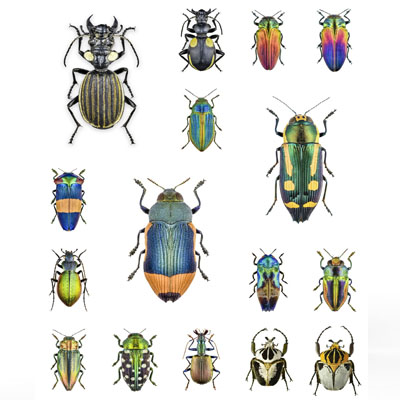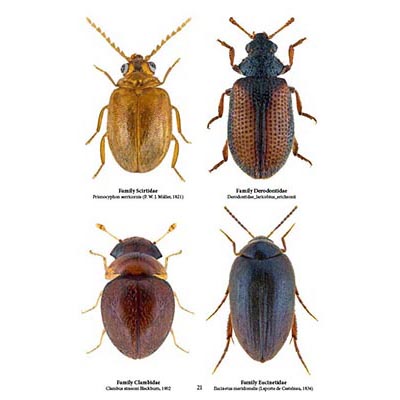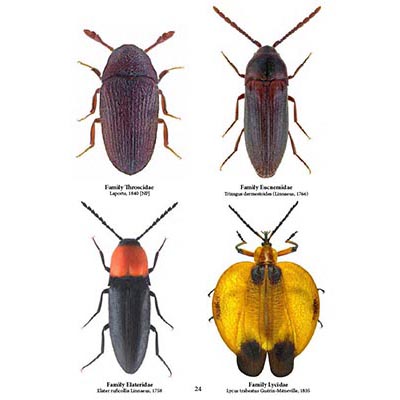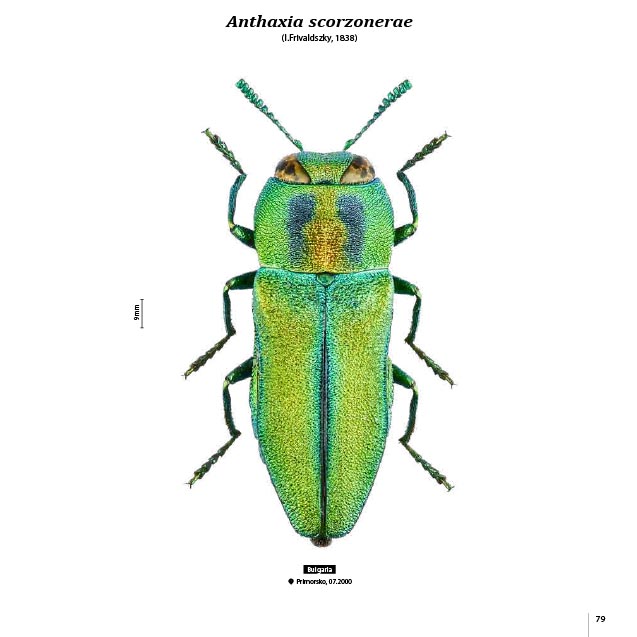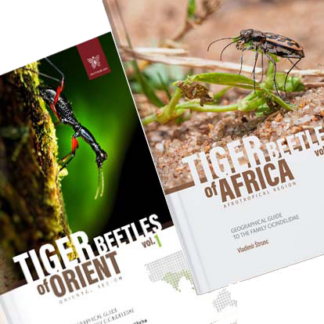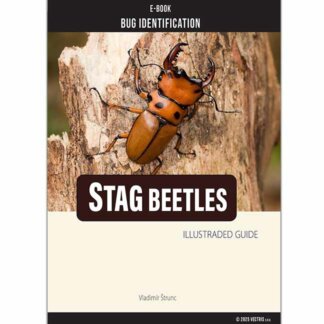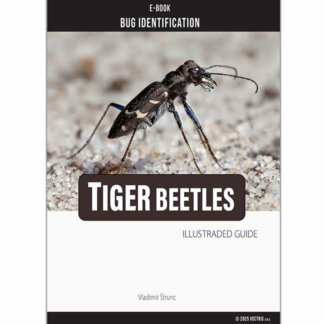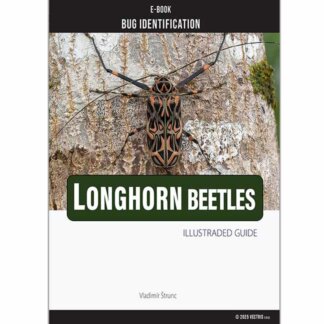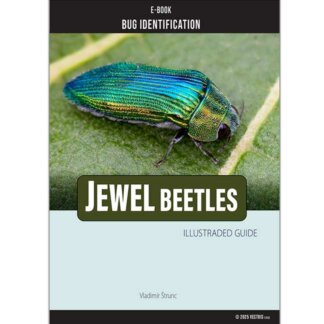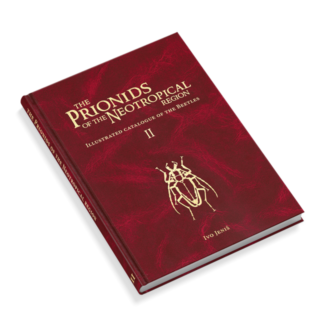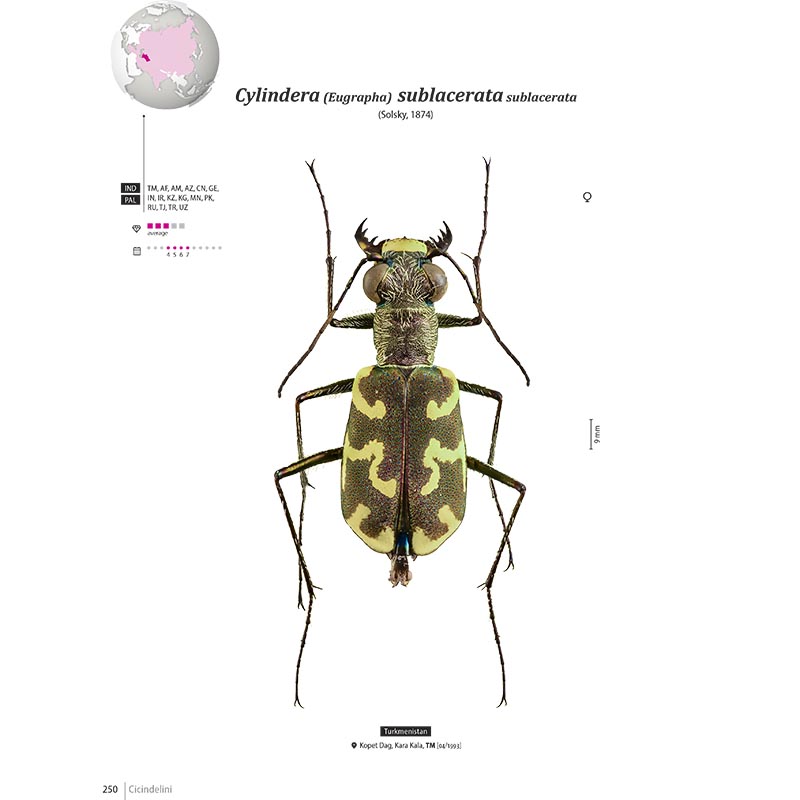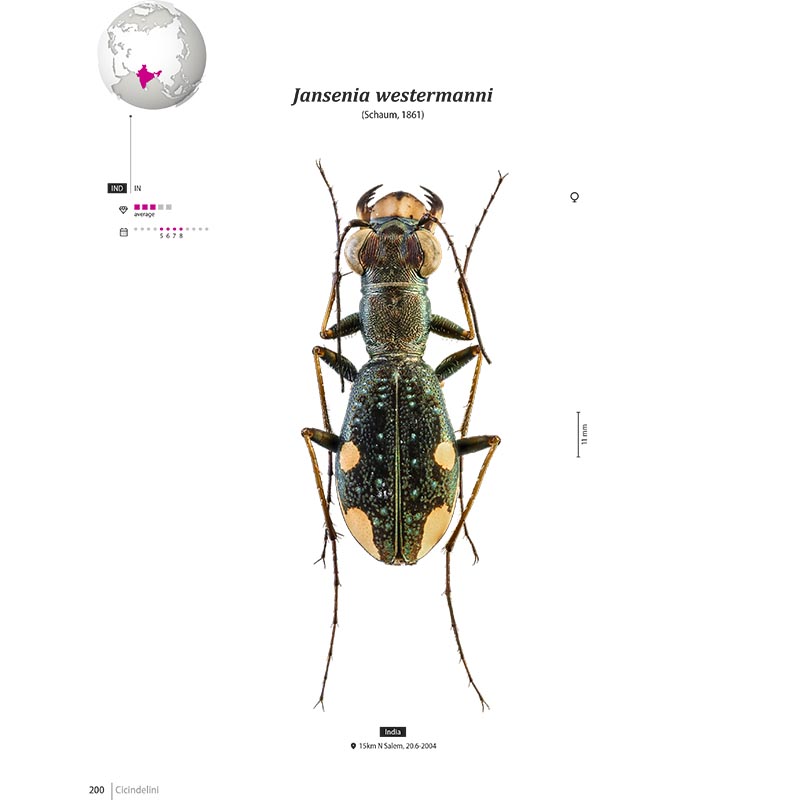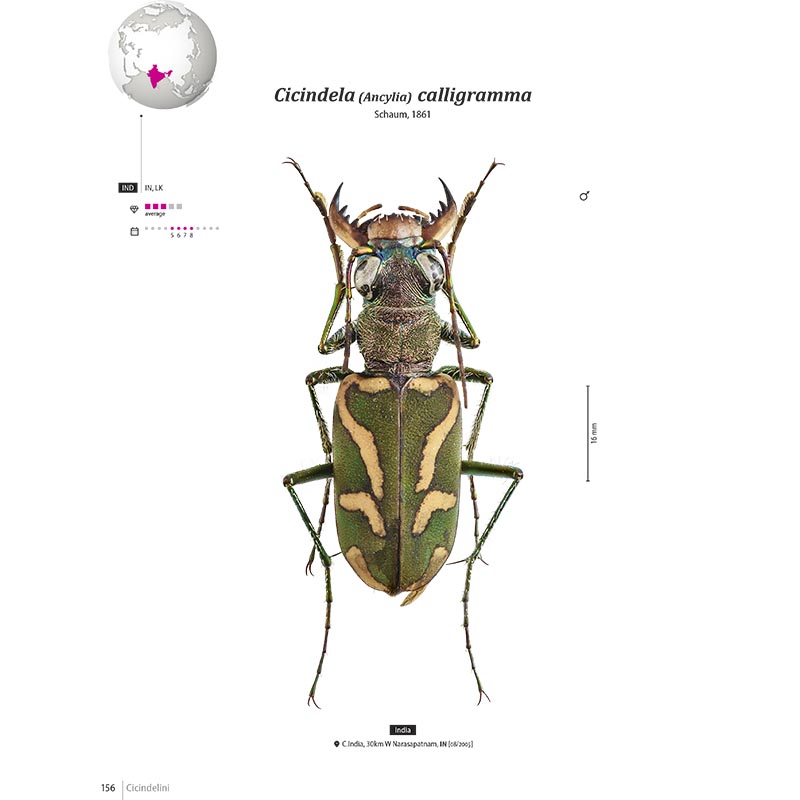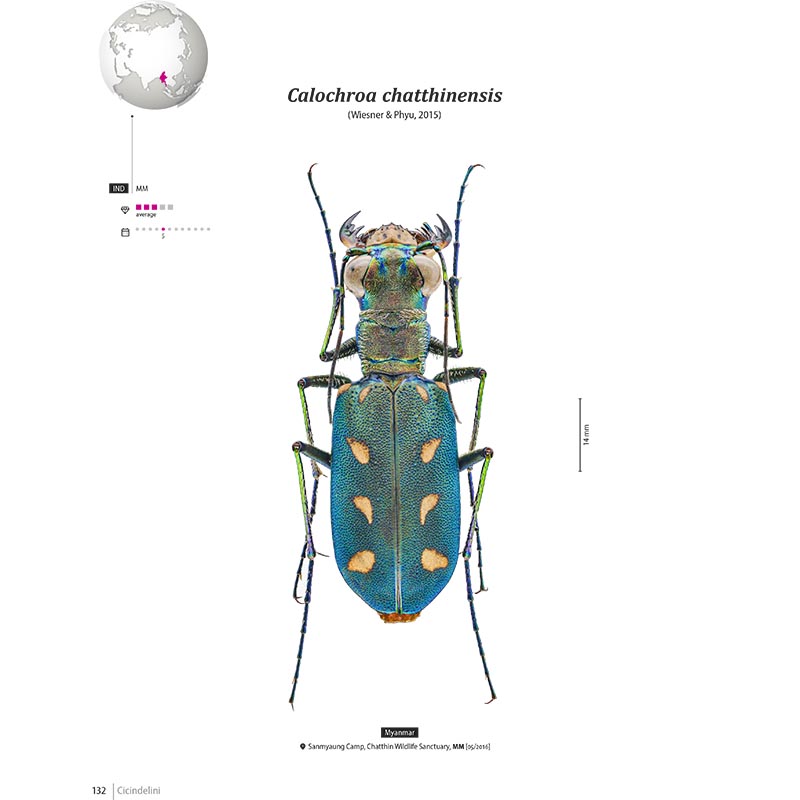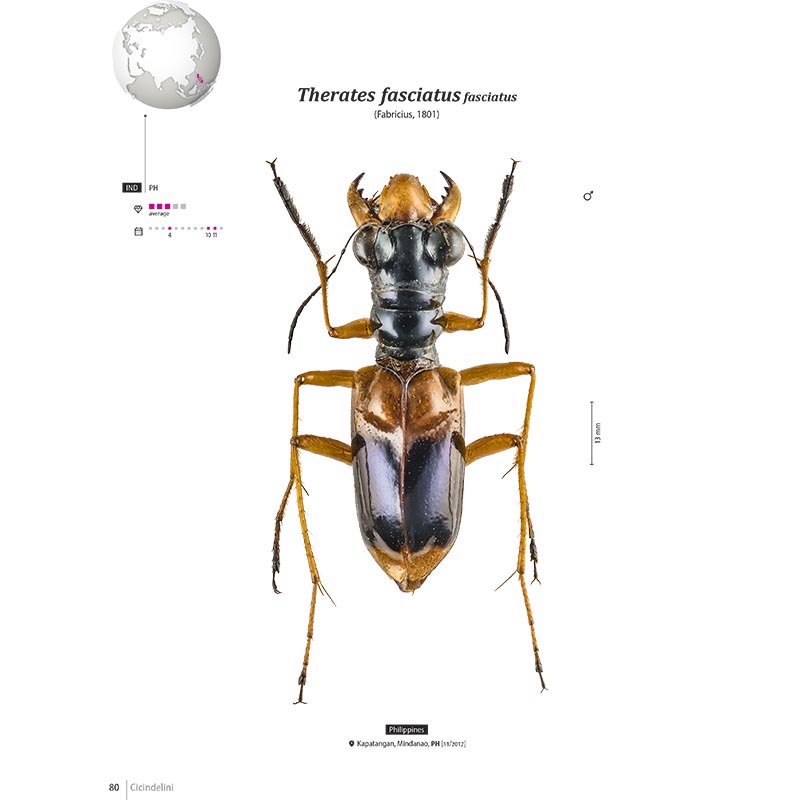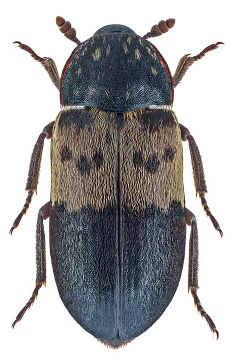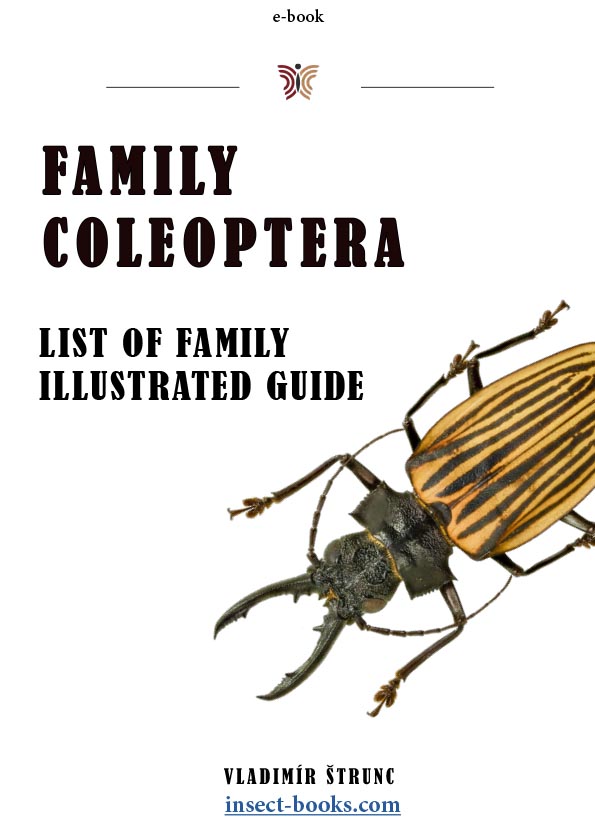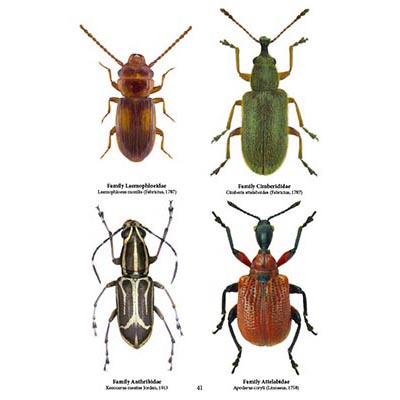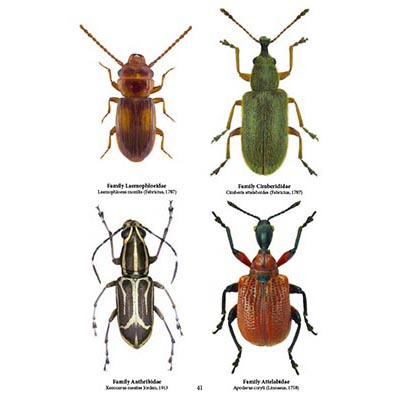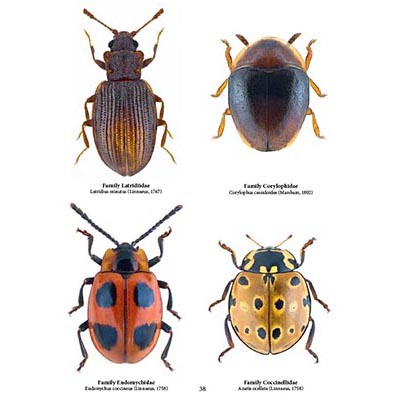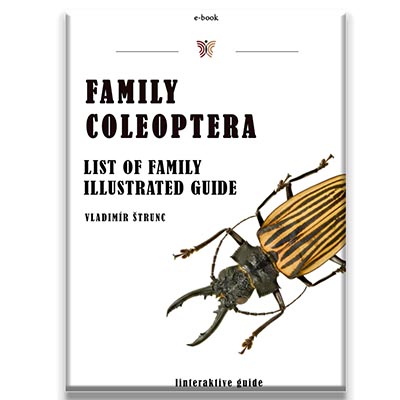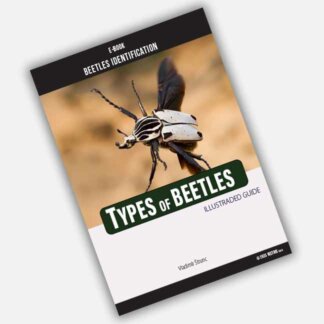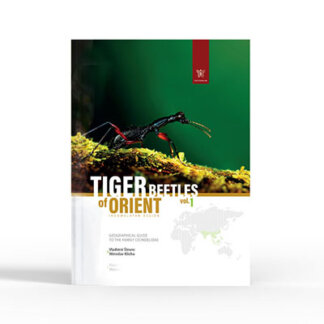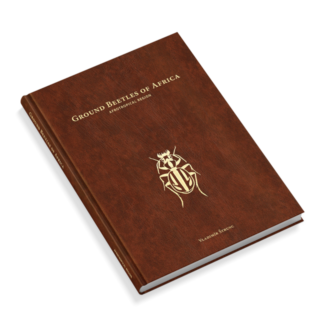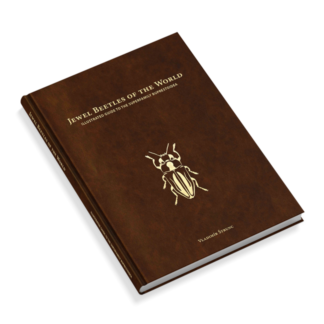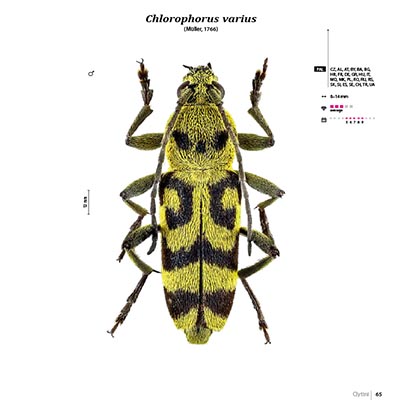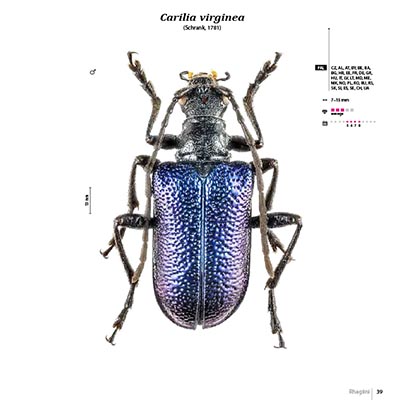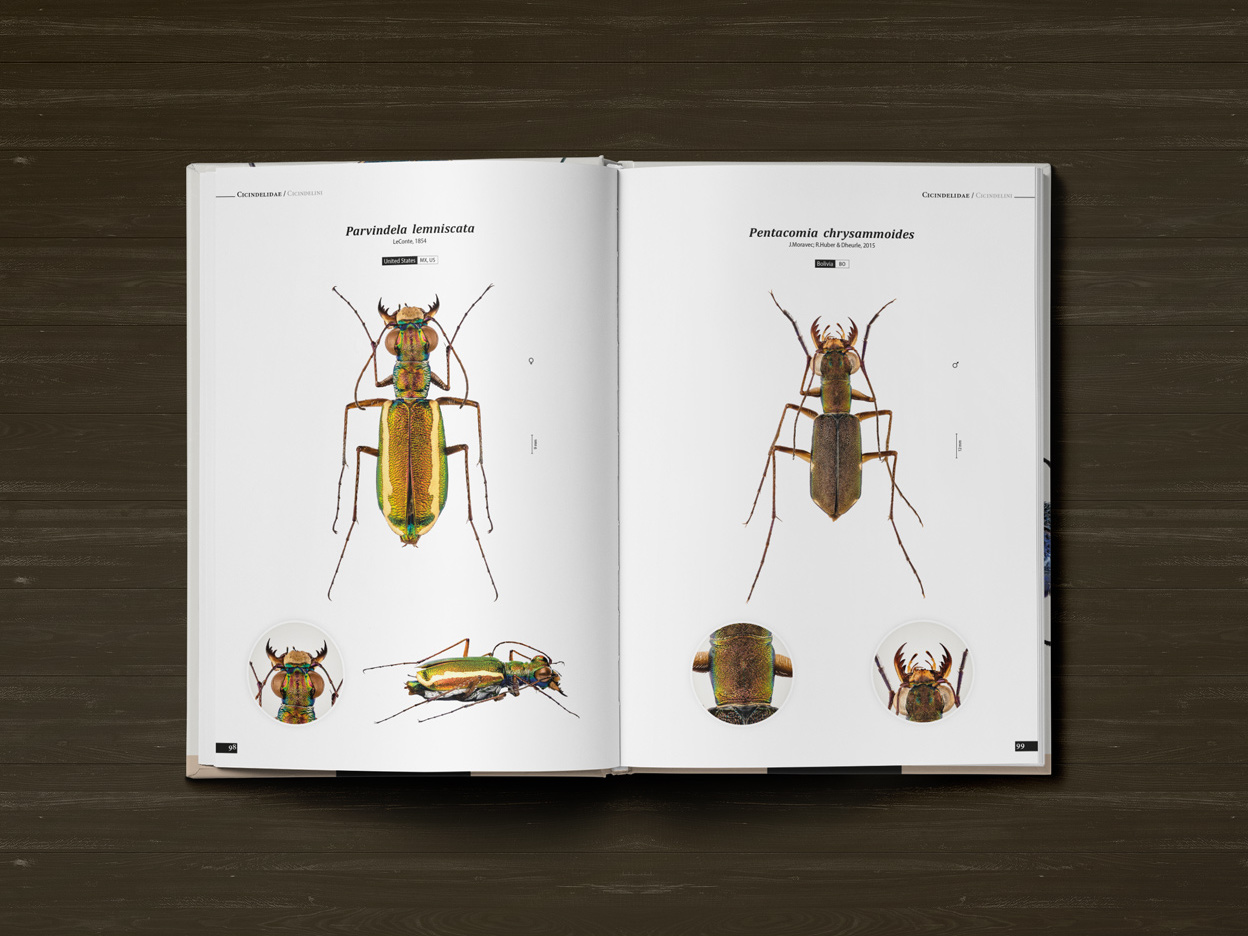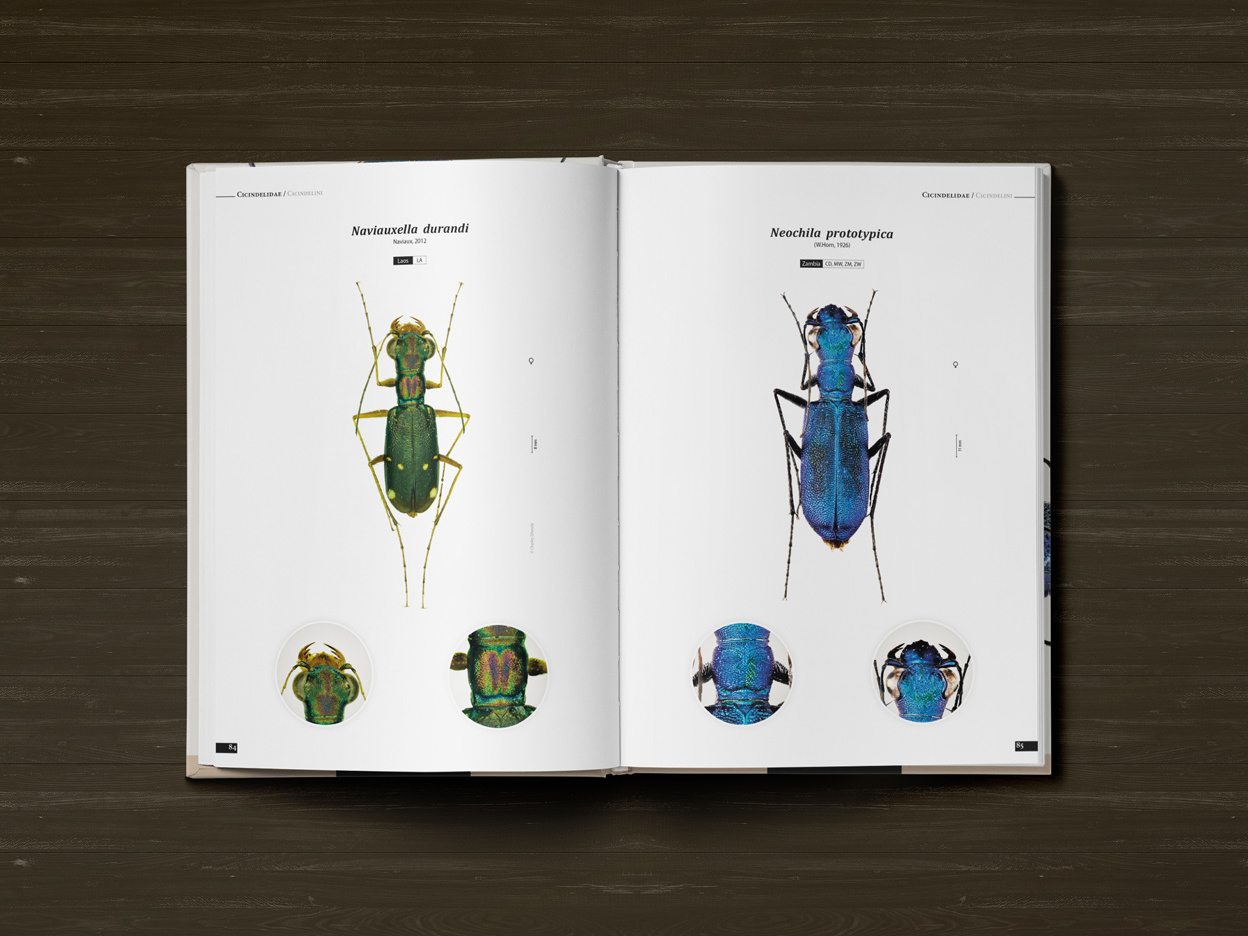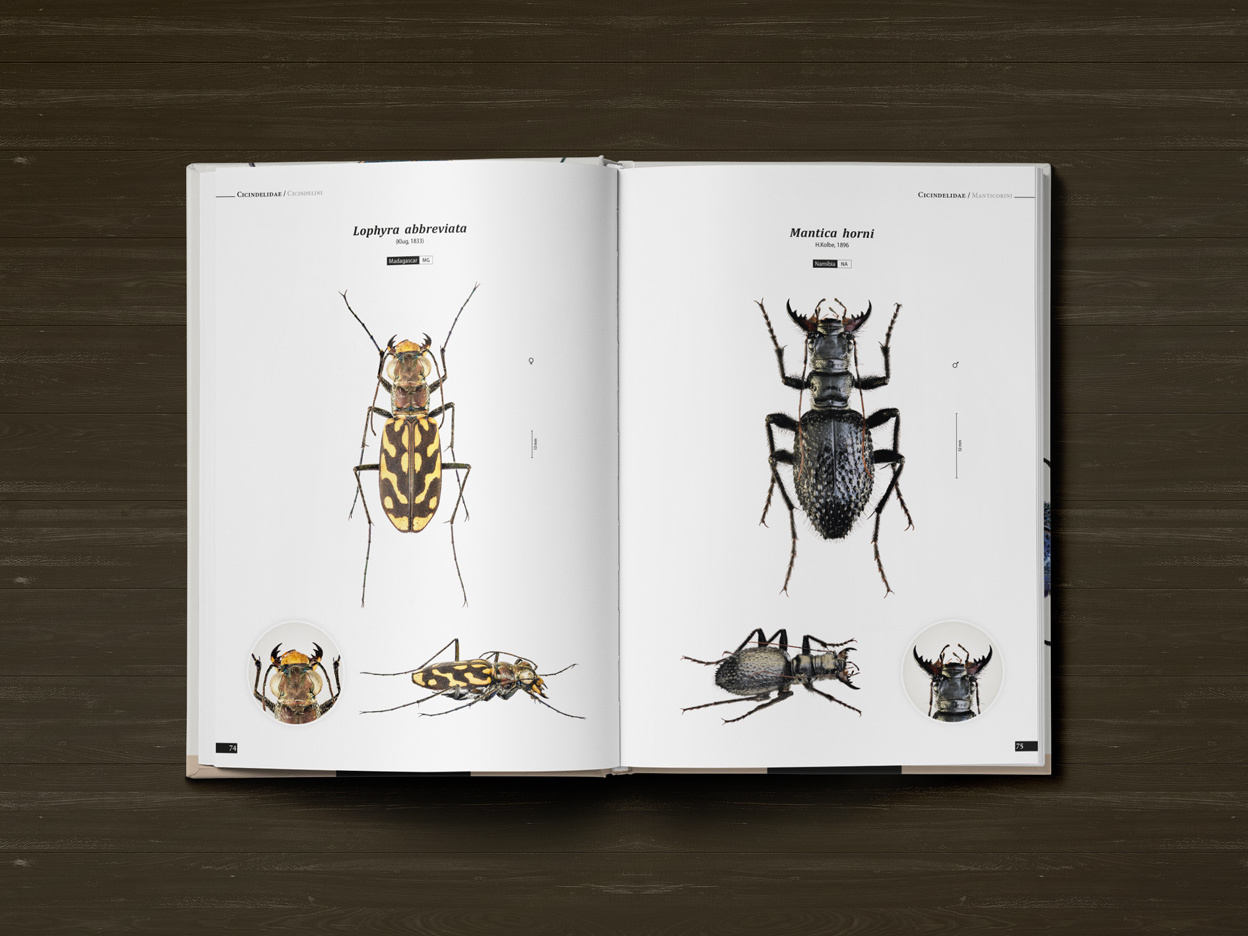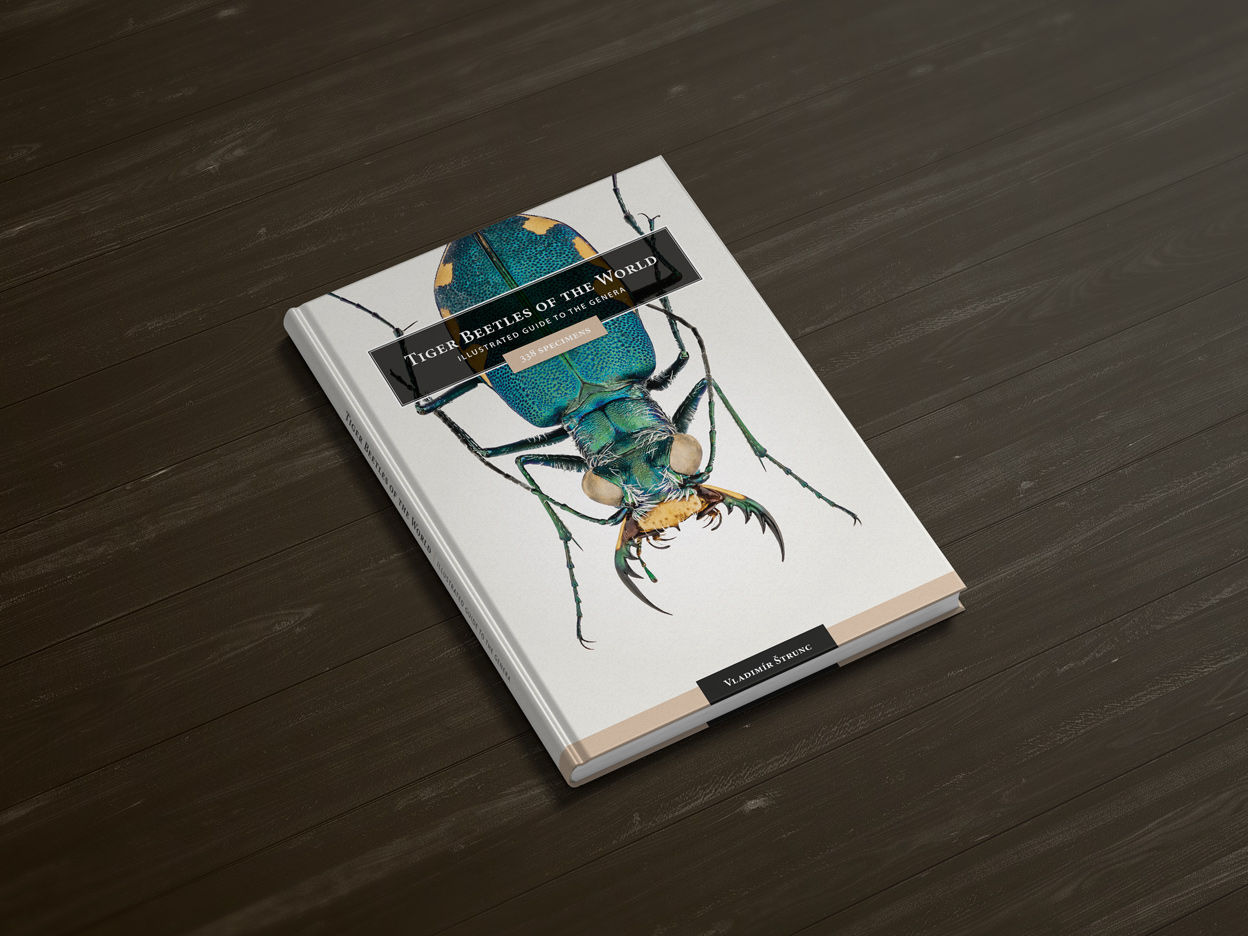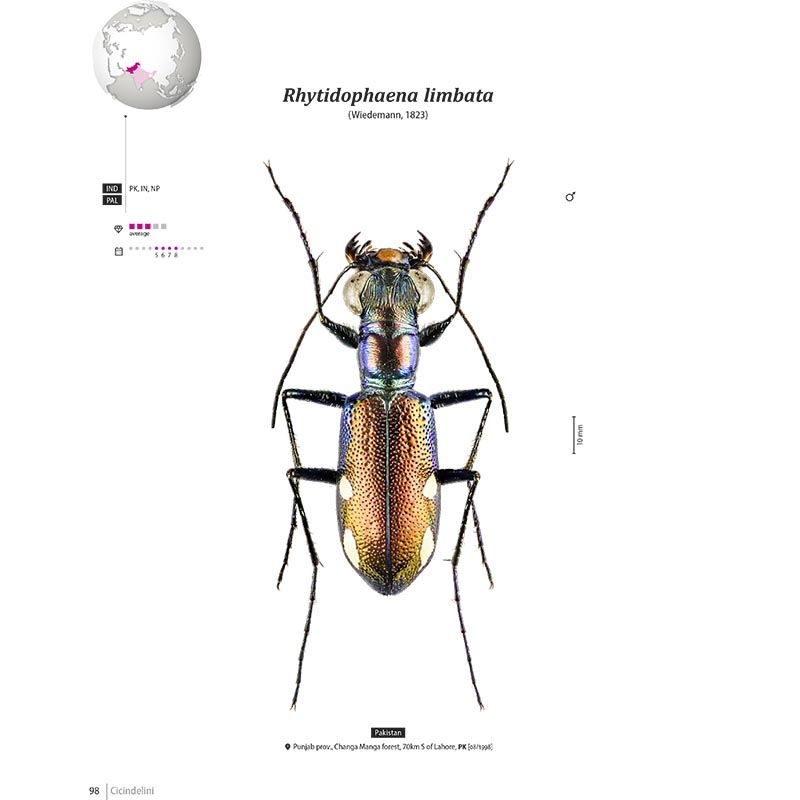Unique pictorial atlases for identifying Beetles. The characteristics of insects, such as their exoskeleton, segmented body, locomotion capabilities, sensory organs, and circulatory system, have contributed to their remarkable diversity and adaptability.
Beetles
We recommend:
10 characteristics of Insects
Exoskeleton: Insects have a hard external covering made of chitin, providing protection and support.
Three Body Segments: Their bodies are divided into the head, thorax, and abdomen, each serving specific functions.
Three Pairs of Legs: All insects possess six legs attached to the thorax, which are adapted for various movements like walking, jumping, or swimming.
Antennae: Insects have one pair of antennae on their heads, used for sensing smells, touch, temperature, and movement.
Compound Eyes: They typically have compound eyes made up of thousands of lenses for wide-field vision; some also have simple eyes (ocelli) for detecting light and dark.
Wings: Many insects have one or two pairs of wings attached to the thorax, enabling flight.
Segmented Appendages: Their legs and antennae are jointed, allowing flexibility and mobility.
Open Circulatory System: Insects have a circulatory system where blood flows freely in the body cavity rather than through veins.
Advanced Sensory Receptors: They are equipped with specialized sensory organs for detecting environmental changes, including temperature and sound.
Bilateral Symmetry: Insects exhibit bilateral symmetry, meaning their body is identical on both sides when split down the middle.

Books about Beetles
Unique pictorial atlases for identifying Beetles:
Introduction to Insect Characteristics
Insects are one of the most diverse and widespread groups of organisms on Earth, with over a million described species. Their success can be attributed to several key characteristics that have evolved over millions of years. One of the most notable features is their exoskeleton, a hard external covering made primarily of chitin. This provides both protection and structural support, allowing insects to maintain their shape and withstand environmental pressures.
Body Structure
Insects have a distinct body plan, divided into three main segments: the head, thorax, and abdomen. Each segment serves specific functions. The head contains the brain, eyes, and mouthparts, which are adapted for feeding and sensory perception. The thorax is the middle segment and is responsible for locomotion, as it bears the legs and, in many species, the wings. The abdomen houses the digestive organs and reproductive structures. This segmentation allows for specialization and efficiency in different bodily functions.
Locomotion and Sensory Organs
All insects possess three pairs of legs, which are attached to the thorax. These legs are highly adaptable, allowing for various forms of movement such as walking, jumping, and swimming. In addition to their legs, insects have antennae, which are sensory organs located on the head. These antennae are crucial for detecting smells, touch, temperature, and movement, providing insects with vital information about their environment. Insects also have compound eyes, which are made up of thousands of individual lenses. This allows for wide-field vision and the ability to detect movement quickly. Some insects also have simple eyes (ocelli) that can detect light and dark, helping them navigate.
Flight and Circulatory System
Many insects have the ability to fly, thanks to one or two pairs of wings attached to the thorax. Flight has been a key factor in the success of insects, allowing them to disperse, find mates, and escape predators more effectively. In terms of their circulatory system, insects have an open circulatory system, where blood (hemolymph) flows freely in the body cavity rather than through veins. This system is efficient for delivering nutrients and oxygen to tissues, especially in small bodies.
Sensory Capabilities and Symmetry
Insects are equipped with advanced sensory receptors that allow them to detect environmental changes, including temperature and sound. These specialized sensory organs are crucial for survival, enabling insects to respond to threats and opportunities. Insects also exhibit bilateral symmetry, meaning their body is symmetrical when divided down the middle. This symmetry is a common feature in many animal groups and provides structural advantages, such as balanced movement and sensory perception.

Conclusion 10 characteristics of Insects
In summary, the characteristics of insects—such as their exoskeleton, segmented body, locomotion capabilities, sensory organs, and circulatory system—have contributed to their remarkable diversity and adaptability. These traits have allowed insects to thrive in virtually every habitat on Earth, making them one of the most successful groups of organisms.
